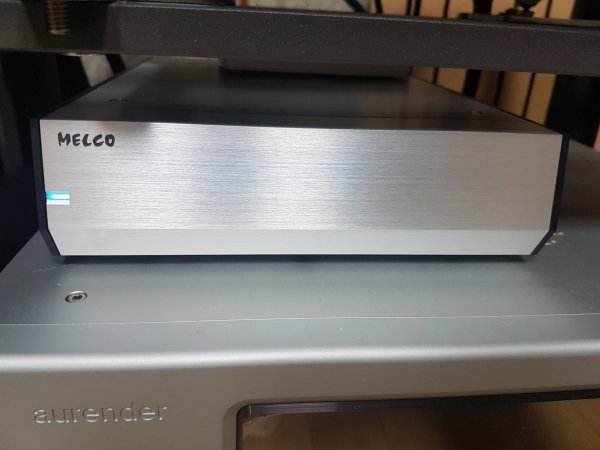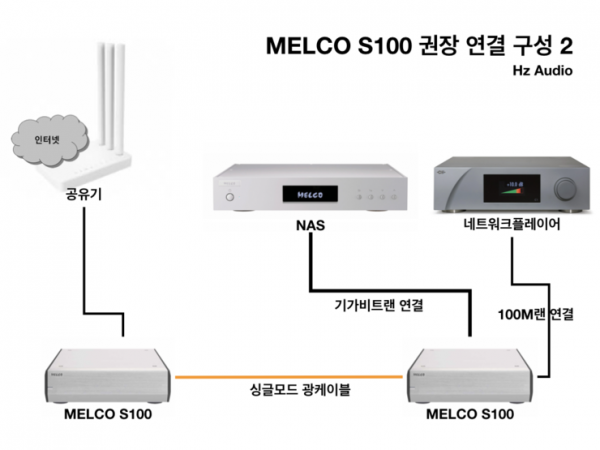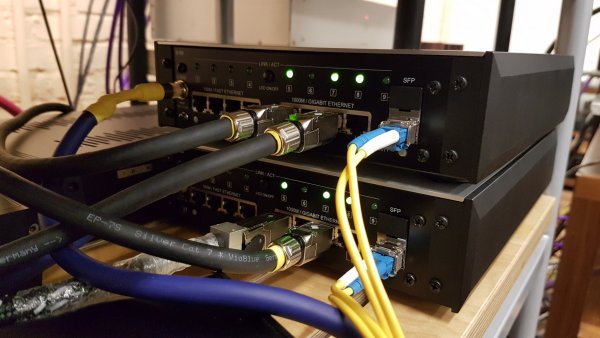It is quite unlikely that we can schedule any gathering to fully evaluate the S100 because of the Coronavirus situation here. So I would try to give our early impression on the S100. This is based on an audition by me and another buddy after burning the S100 for a week. I have not tested the 100Mbp ports because for my system there is some difficulty with 100Mbp network so the majority of the test are done with 1G ports and optical ports. I am feeding all three switches SOtM, ER and S100 with Uptone LPS1.2. For the ER I have also connected a ground cable from its ground connector to the earth post of the power inlet as suggested when used with LPS 1.2. The SOtM and ER are fed by Cybershaft OP21A 10M reference clock. The testing is using the switch in between my DIY Linux server as HQplayer and the other endpoint NAA linux computer. The NAS and router are also connected to the switch. The copper RJ45 cables are DIY Viablue EP-7S with Telegartner cat8A plugs (one end shield is not connected to keep galvanic isolation). Vertere ethernet cable is used to connect to NAS. We tried the following
(1) SotM with clock
(2) ER with clock (HQplayer, NAS and router to A side and NAA to B side)
(3) S100 (no clock)
(4) SOtM ---> through optical single mode Finisar 1310nm SFP and Conning OS2 single mode fibre ---> S100
(5) SOtM ----> Copper ---> S100
(6) S100 ----> optical ---> SOtM
(7) S100 ---> copper ---> SOtM
For single switch situation the character is very different for the 3 switches. SOtM is musical, a little light lacking some bass frequency and a thin orchestra but overall musical and enjoyable. ER the mid range has more quantity but the high and low are not really beautiful. The sound a bit rough and not really attractive. S100 on its own exhibited a very unique character quite unlike other switches. The sound is pure, transparent, powerful and full bodied. The orchestra just come out in full strength and soundstage is wide and deep. It is a 100 odd member orchestra and not a chamber orchestra. The punch and attacks are forceful. The low comes out most powerful among all three switches. So to both of us single ER is not our cup of tea and we would not test it any further. SOtM is better for chamber music because of its more musical feel. S100 is definitely the choice for full orchestra recordings.
Will combing the 2 switches give you the best of both worlds. Yes. Combining SOtM with S100 gives you a much improved soundstage and low frequency. And to both of us using optical in situation(4) gives the best in chamber and small ensembles. Situation 5 gives you a bit more mid range . While situation(6) gives the best orchestra soundstage but tends to be a little dry. If changed for copper(Situation 7)there is better timbre but bit less of dynamics.
I do remember last time when we stack 2 SOtM the sound is much better but it is with 2 Vertere and one Dalby Audio Meda Ethernet cables. It is likely that the expensive ethernet cables is dominating rather than just the SOtM switches. When we stack 2 SOtM 2 months back during our audition for ER the sound is not as convincing as a year or so ago probably because of the lack of expensive ethernet cables.
So a small summary for the early impression of S100. It is well worth its price being comparable to a clocked SOtM. the two have very different character and the two can be combined together to get a good synergy. The S100 is still not yet burned in and the sound is expected to become more smooth after burning in and the use of ethernet cable can also be used to tweak the sound. At this juncture a SOtM + S100 seems to be a better alternative than 2 SOtM to both of us. But we hope to do a more in depth evaluation including testing 100Mbp ports (which are supposed to be more musical) after the Coronavirus situation is under control.













